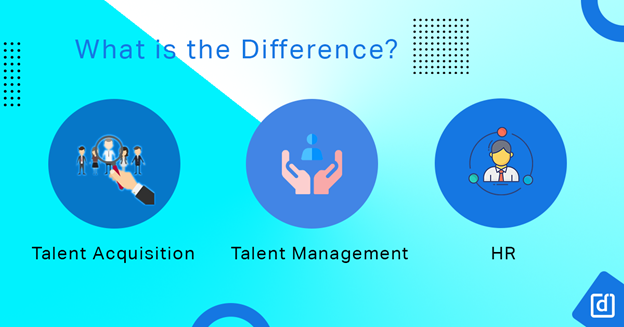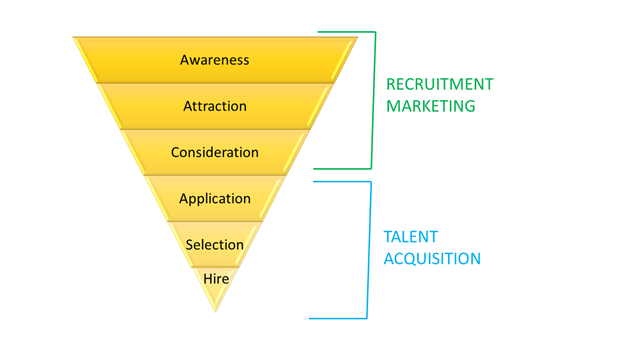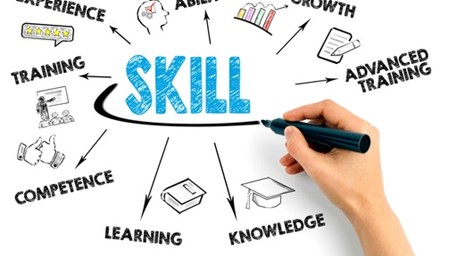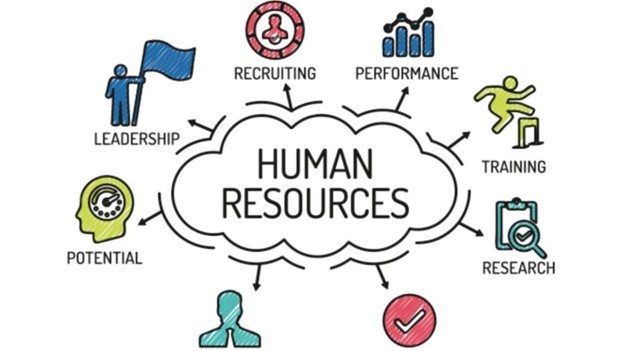.png)
It’s a very common misconception that Talent acquisition, talent management and HR are the same, often used interchangeably by many, creating a bubble of confusion to understand its true meaning.
While all three of them fall on the same plate, the “recipe” is different!
 It’s time to get our facts straight and start using the terms as per their definitions. Specially, when it comes to the Human Resource as a business function, there are a lot of terminologies which are being used synonymously, even though there is a clear differentiation among them. A common error is using the “3 terms”.
It’s time to get our facts straight and start using the terms as per their definitions. Specially, when it comes to the Human Resource as a business function, there are a lot of terminologies which are being used synonymously, even though there is a clear differentiation among them. A common error is using the “3 terms”.
Here’s how the 3 are different:
What Is Talent Acquisition?
Talent Acquisition is defined as finding the best fit individuals for your organisation/profile who can be a PJ or PO fit. The type of fit usually depends on the type or role and seniority of the profile. 
To put it in a process, the talent acquisition teams are responsible for a number of tasks, these are :
- Building a strong employer brand to attract the best talent.
- Acquiring and hiring the best individuals for the organisation
- Devising the pre - onboarding process for the candidates to transition swiftly
- Maintaining a connection with the past candidates who might not have been selected for the current role but can definitely fit them for certain future openings.
Organisations and conglomerates make use of varied platforms which can help them get the right candidate. Platforms such as LinkedIn, job boards (naukri.com, Indeed, Glassdoor), are a few of the many. Popular social media platforms such as Facebook are also picking up the pace in its availability to find suitable candidates.
Proven Talent Acquisition Methods:
-
Employee Referrals :
It is no denying that employee referrals are the most effective way to get the exact candidate which the organisation might be looking for, making the process faster and more efficient. Don’t believe us? According to this report by LinkedIn, employee referrals were found to be the best source of hiring the best talent for the organisation.
-
Recruitment via Social Media Platforms :
Platforms such as LinkedIn (close to 740 million users) has been the ‘virtual job market’ with a great number of good talent being available. No wonder that these days, organisations have been using social media platforms extensively for their recruitment campaigns. It’s cost effective and faster since most of the relevant candidate details are readily available on the platform itself.
-
Job Portals :
Job Portals such as naukri.com, Glassdoor are one of the best places to raise a requisition. Though a not so perfect process, it still yields good candidates based on the job details provided.
-
Careers Page :
Lets face it, a hungry candidate would look up the ‘dream company” on google and will definitely go to the careers page of the website. Having a strong and intuitive website backed by important information about the organisation will help you attract the right talent. -
College/Institution Recruitment Drives :
College recruitment drives, though not a cost effective way, is definitely one of the best ways to find talented and fresh minds. College recruitments usually provide candidates who are up for taking a challenge and to learn new things instead of trying to get a ‘casual 9 to 6 job’. This can definitely help your organisation to get people who can think out of the box.
It’s important to understand the need to acquire individuals who are good, worthy and eager to learn. Something which cannot be emphasised enough. It is important that the managers and L2 level executives be a part of the process to predict the need of potential vacant spots which may arise in the near future. Furthermore, the experience that each individual candidate has for the entire recruitment process, can be taken as a filter to create a more concrete process if needed and sort people accordingly.
What Is Talent Management?
Talent Management is a continuous process which starts post the individual gets onboarded. Now, why is it a continuous process? And not a one time thing? The answer is pretty simple, you want to retain your best talent! Talent Management covers from creating a wonderful on-boarding experience, to a comprehensive training program, to continuous processes which deals with Rewards and Recognition, Feedbacks, Appraisals, Employee Engagement, Performance Management and much more.

The process is never lenient and it would differ from function to function. It comprises of strategies and techniques through which the current employees and the newly hired are managed, in terms of their overall output, skills, and training received. Having said that, the team of talent management can be broadly accounted for the following :
- Managing the entire candidate experience after onboarding.
- Providing the coaching/ training resources to help the new joinees come to pace with the business.
- Mentoring and promoting current employees basis their performance.
- Playing a key role in defining the role fulfilment by new joinees and aligning to either retain or let go of the employee for the organisation's benefit.
- Providing a platform for continuous feedback and employee engagement in order to maintain employee productivity.
It is never about just filling in the vacant positions. While Employee Onboarding as a process is often overlooked, it plays a vital role in building the motion in talent development and building up that requisite interest the new joinees should have.
While it’s difficult to structure the entire process, it can however be narrowed down to 2 important parts of the employee lifecycle :
- Employee Engagement
It is very important to keep the office/workplace conducive and positive. Boosting employee morale via rewards and recognitions, constructive feedback, performance appraisals, promotions etc. are a few of the motivation factors which work best. - Employee Retention
Hiring an individual is definitely not going to be enough. It's a very important job for the management to look into maximum employee retention. A very important factor to have a productive workforce and a growing business.
Lets face it, talent management is definitely not an easy job and needs a good strategy in place. These strategies can be quarterly or even monthly based on the workforce strength. Making a new recruit familiar to the workplace and simultaneously introducing her/him with the responsibilities under his purview are basic yet important processes that the talent management team has to cover.
Similarly, to carefully assess each job position's demand in the organisation will help in understanding better the type of talent which would be needed to be onboarded. The process is continuous and needs to be adhered to with due diligence.
Now you would think, how is this any different from someone who is an HR in your organisation?
What is Human Resource?

Typically, an HR is responsible for :
- Building the necessary workflows for talent acquisition and management.
- Monitoring the entire onboarding process from start to finish and post.
- Hiring and laying off employees based on the performance of the individual.
- Leading all the training and recruitment teams and monitoring the performance of individual candidates during the entire process.
- Planning and policy making for the workforce.
What is the relationship between Talent Acquisition, Talent Management and HR? Are they a part of the same team?
While a few organisations would have 3 separate departments, the majority of the organisations combine the 3 into one single department with sub functions as Talent Acquisition and Talent Management. Even so, does this mean that these 3 compete with each other? Never!
Both Talent Acquisition and Talent Management are the most powerful functions of the HR department, responsible for making the Human Resource segment of an organisation have a better understanding of processes and create a strong base for Human Resource as a whole.
The more the synchronisation is between the teams, the more effectively and efficiently the tasks can be executed, be it any department!
Finding the appropriate talent will put things in motion by the talent acquisition team and those hired will be further sent down the “Talent Funnel” to the talent management team who would do their best to polish and uplift these new joinees by bringing their onboarding, training and management skills to use.
As a result, the entire employee lifecycle from hiring to retiring becomes a piece of cake! Each domain has its own importance and one shouldn't be considered superior or inferior to the other.
Collaboration is key, whether its 3 separate departments or one single unit with 3 separate functions. The job may differ, but the end result remains the same, creating an effective and productive employee.



Speak Your Mind